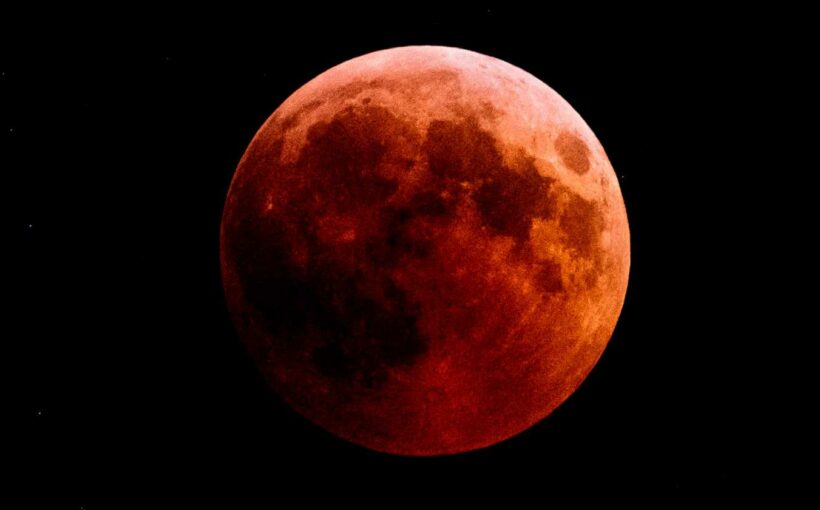Story Highlights
- A lunar eclipse occurs when the Earth is between the full moon and the sun.
- Folks in the western U.S. will have the best view of the eclipse.
- A supermoon means that the moon looks a bit bigger than usual since its a bit closer to the Earth than usual.
The full moon during a 'blood moon' eclipse as seen from the town of Kazanlak, Bulgaria, on July 27, 2018. (Photo: DIMITAR DILKOFF, AFP/Getty Images)
It’s the sky spectacle of the year.
Next Wednesday, May 26, a full “supermoon” will brighten the night sky over the U.S. At the same time, a total lunar eclipse will be visible across the western U.S. during the predawn hours.
A lunar eclipse occurs when the Earth is between the full moon and the sun. The Earth’s shadow covers the moon, which often has a red color, hence the “blood” moon nickname.
Although it’s completely in the shadow of Earth, a bit of reddish sunlight still reaches the moon.
You don’t need special glasses or gizmos to view it, unlike a solar eclipse, so feel free to stare directly at the moon. Binoculars or a telescope will improve the view.
Folks in the western U.S. will have the best view of the eclipse, while those in the central U.S. will see a partial lunar eclipse just before the moon sets below the horizon. Unfortunately, people who live along the East Coast won’t see much of anything eclipse-related, the Old Farmer’s Almanac said.
Hawaiians will get a great view with the eclipse happening high in their sky in the middle of the night, the Almanac said.
‘Sightings all over the world’: Another former federal official discusses UFOs, upcoming congressional report
And what does a supermoon mean?
It just means the moon looks a bit bigger than usual since its a bit closer to the Earth than usual.
“Because the orbit of the moon is not a perfect circle, the moon is sometimes closer to the Earth than at other times during its orbit,” according to NASA.
On average, supermoons appear about 7% bigger and about 15% brighter than a typical full moon.
This is also the second and last supermoon of 2021.
Aside from the blood and super moon names, it’s also the flower moon, a name given to May’s full moon because “flowers spring forth across North America in abundance this month,” the Old Farmer’s Almanac said.
Other names for May’s full moon include the corn planting moon and the milk moon, NASA said.
Source: Read Full Article
